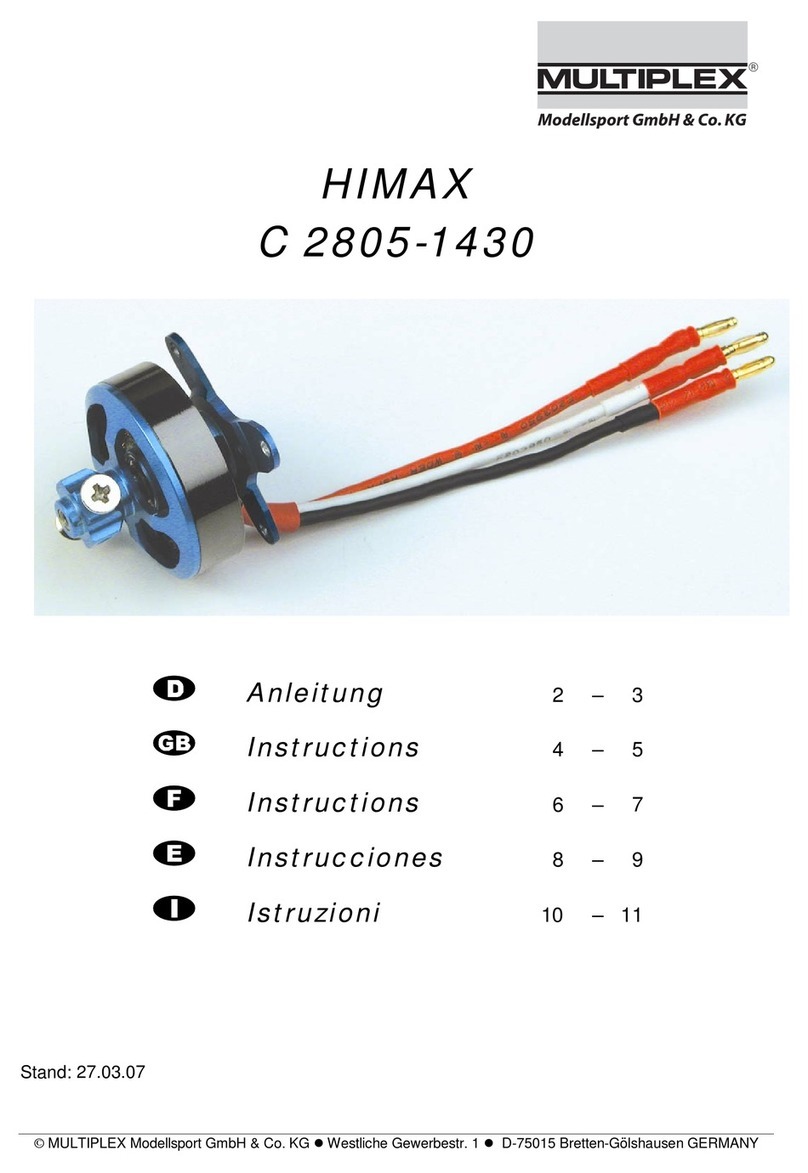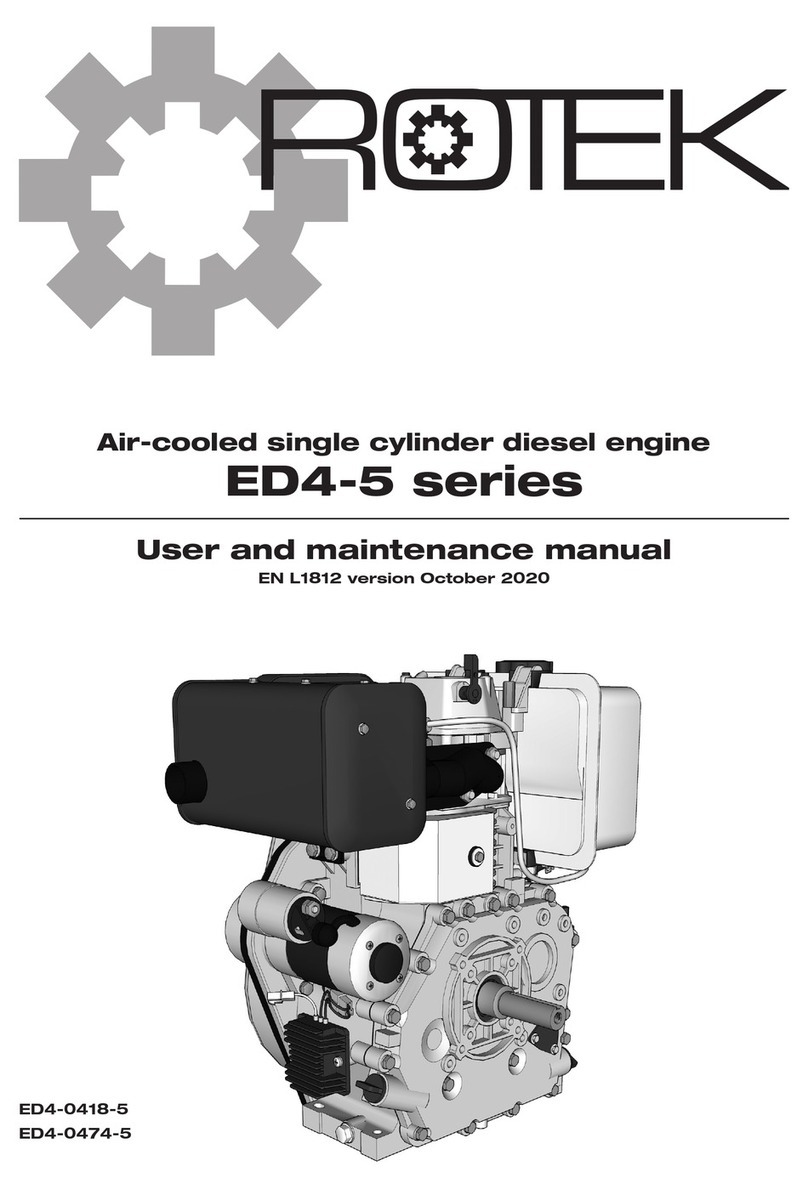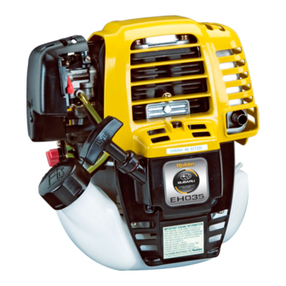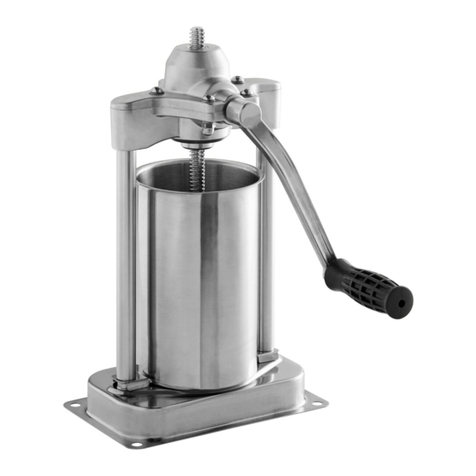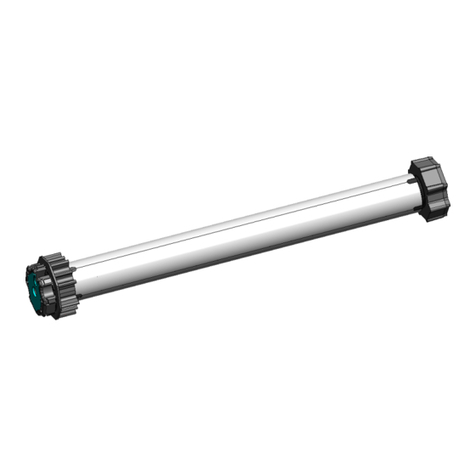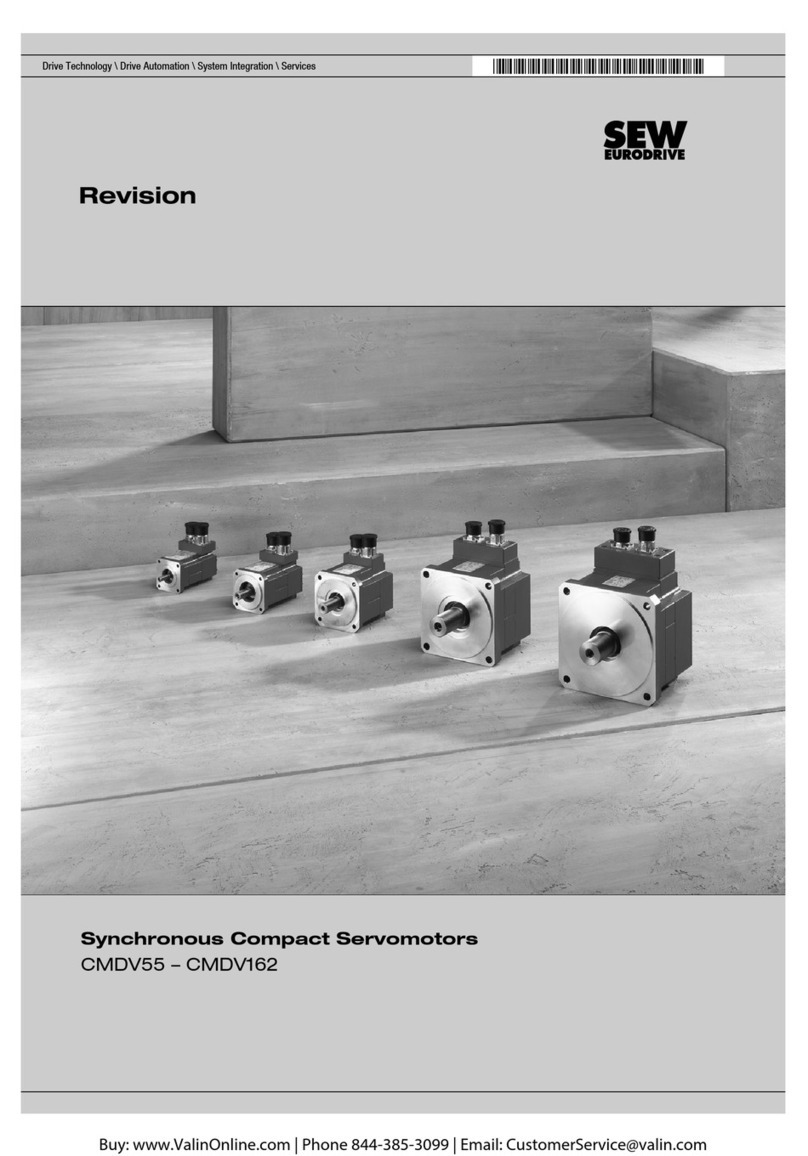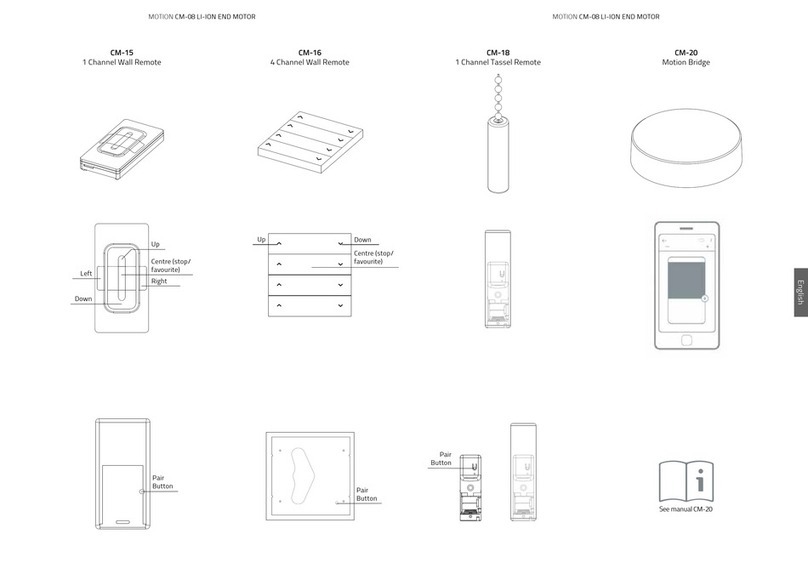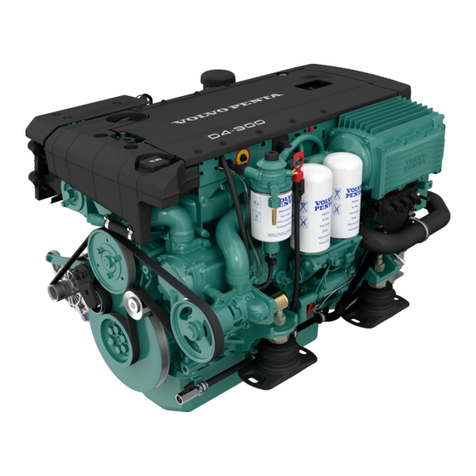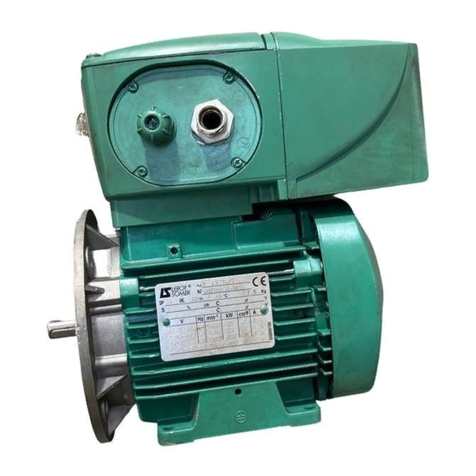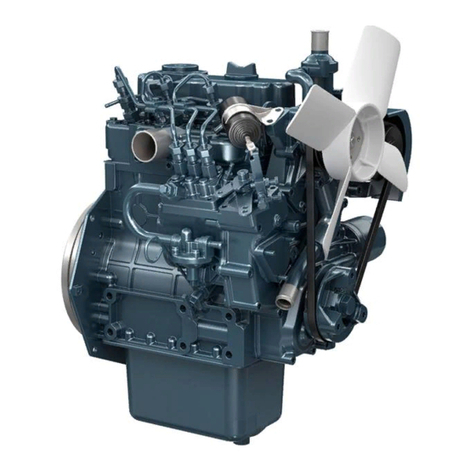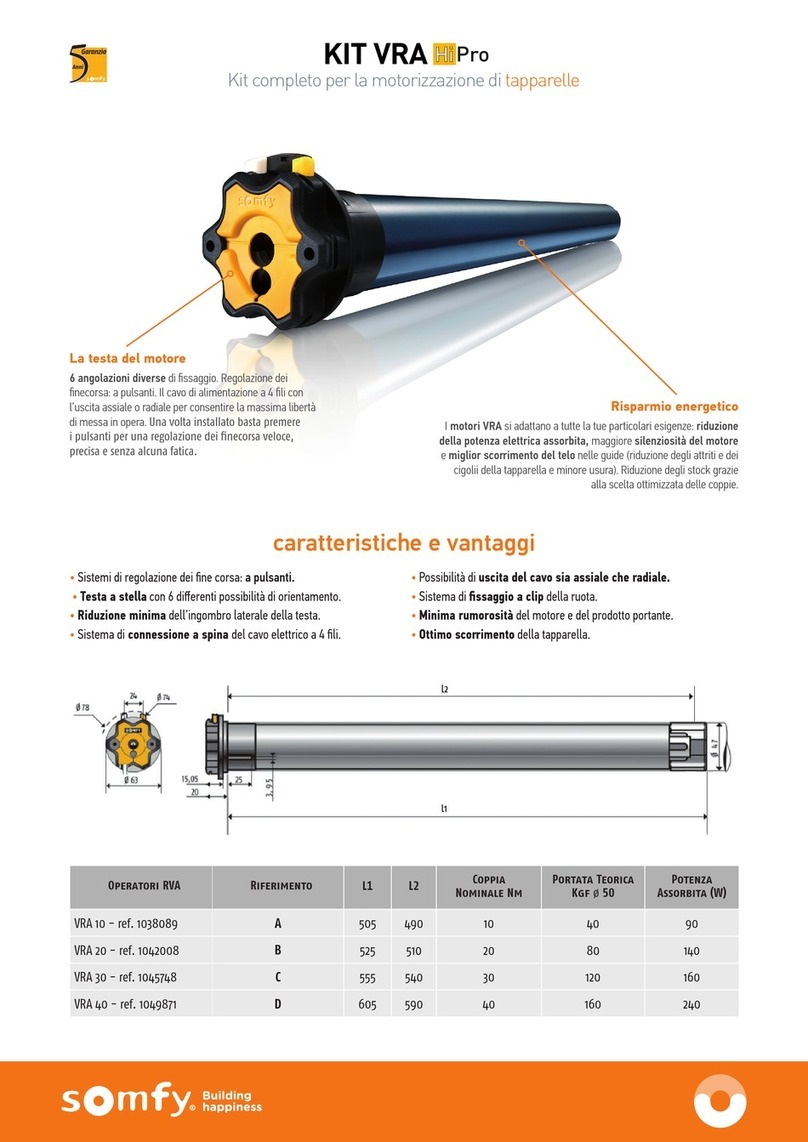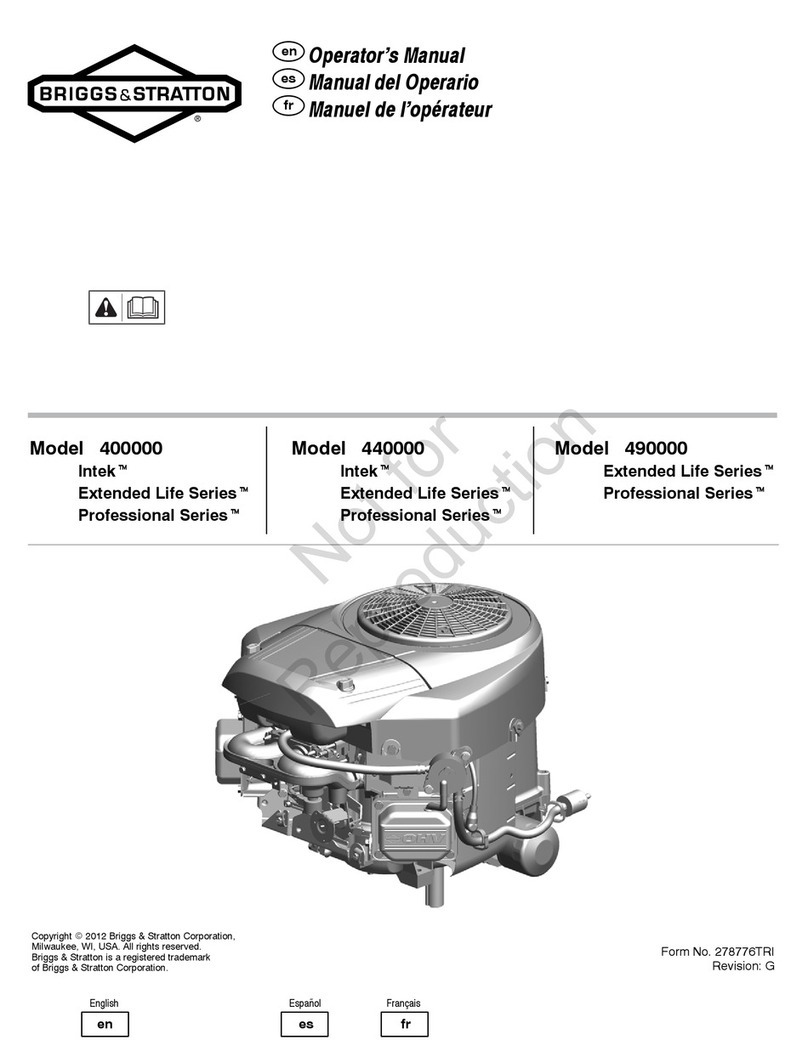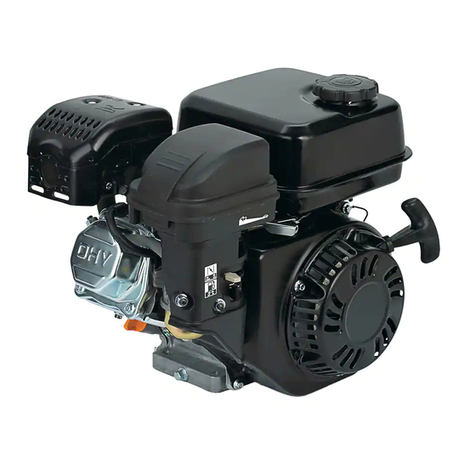Traxxas TRX 2.5R User manual

OWNERS MANUAL
™
®

TRX 2.5R •2
Traxxas
1100 Klein Road
Plano, Texas 75074
Phone: 972-265-8000
Toll-free 1-888-TRAXXAS
Traxxas U.K.
P.O. Box 1128
Winterbourne, Bristol BS36-2SH, England
Phone: 44-117-956-1002
Internet
www.Traxxas.com
e-mail: [email protected]
Entire contents ©2004 Traxxas. Traxxas, TRX 2.5R, Top Fuel, and Ready-To-Race are trademarks
or registered trademarks of Traxxas. Other brand names and marks are the property of their
respective holders and are used only for purposes of identification. No part of this manual may
be reproduced or distributed in print or electronic media without the express written
permission of Traxxas.
Note: Some photos show the engine equipped with optional accessories, such as the EZ-Start
system, headers, and engine mounts, that are not included in the engine package. See the end
panel of the engine box for exact contents based on your engine model number.

TRX 2.5R •3
Before You Proceed
Carefully read and follow all instructions in this and any accompanying materials to prevent
serious damage to your engine. Failure to follow these instructions will be considered abuse
and/or neglect. Before running your TRX 2.5R Racing Engine, look over this entire manual and
examine it carefully. If for some reason you decide the TRX 2.5R is not what you wanted, do
not continue any further. Your hobby dealer absolutely cannot accept a TRX 2.5R for return
or exchange after it has been run.
Warnings, hints, and cross-references
Throughout this manual, you’ll notice warnings and helpful hints, identified by the icons
below. Be sure to read them!
An important warning about personal safety or avoiding damage
to your TRX 2.5R Racing Engine and related components.
Special advice from Traxxas to make things easier and more fun.
Refers you to a page with a related topic.
Support
If you have any questions about your TRX 2.5R Racing Engine or its operation, call the Traxxas
Technical Support line toll-free at: 1-888-TRAXXAS (1-888-872-9927)
Technical support is available Monday through Friday from 8:30am to 9:00pm Central time.
Technical assistance is also available at www.Traxxas.com. You may also e-mail customer
enthusiasts in our online community at www.Traxxas.com.
Traxxas offers a full-service, on-site repair facility to handle any of your Traxxas service needs.
Maintenance and replacement parts may be purchased directly from Traxxas, or you can save
shipping and handling costs by purchasing them from your local hobby dealer.
4Safety Precautions
5Introduction
6TRX 2.5R Racing
Engine Illustrated
7Terms to Know
11 The Fuel
13 The Air Filter
14 The Carburetor
18 Breaking-in Your
TRX 2.5R Racing
Engine
22 Tuning the TRX
2.5R for Best
Performance
27 Troubleshooting
Your TRX 2.5R
Racing Engine
30 Maintaining and
Storing Your TRX
2.5R Racing Engine
33 Index
34 Rebuilding the TRX
2.5R Racing Engine
BEFORE YOU PROCEED

TRX 2.5R •4
All instructions and
precautions outlined in
this manual should be
strictly followed to ensure
safe operation of your
TRX 2.5R Racing Engine.
The TRX 2.5R Racing Engine
is not intended for use by
those under 16 years of
age without the supervision
of a responsible and
knowledgeable adult.
Safety Precautions
All of us at Traxxas want you to safely enjoy your new TRX 2.5R Racing Engine. Operate your TRX
2.5R sensibly and with care, and it will be exciting, safe, and fun for you and those around you.
Failure to operate your TRX 2.5R in a safe and responsible manner may result in property damage
and serious injury. The precautions outlined in this manual should be strictly followed to help
ensure safe operation. You alone must see that the instructions are followed and the precautions
are adhered to.
Important Points to Remember
• R/C fuel is dangerous and highly poisonous. Always follow all directions and precautions printed
on the fuel container.
•R/C fuel, especially when in a fuel dispensing bottle, may look like a cool drink to a child. Keep all
fuel out of the reach of children at all times. Do not place fuel containers on the ground where
children can get to them while you are driving.
•R/C fuel is flammable. Never allow smoking, sparks, heat or flame in the presence of fuel
or fuel vapors.
•The engine and exhaust system may become extremely hot during use. Be careful not to touch
the parts, especially when refueling or stopping the engine.
•Prolonged exposure to the engine exhaust can be harmful. Avoid breathing the engine exhaust.
Always run your TRX 2.5R outdoors, in a well-ventilated area. Never run the engine indoors.
•Don’t operate your model at night or anytime your line of sight to the model may be obstructed
or impaired in any way.
•Never operate your model in crowds of people or busy pedestrian areas. The TRX 2.5R makes
models extremely fast and may cause injury to those unaware of its presence.
•The engine can be loud. If the noise makes you uncomfortable, wear ear protection. Be
considerate of your neighbors by not running your model early in the morning or late
in the evening.
•
Most importantly, use good common sense at all times.
SAFETY PRECAUTIONS

TRX 2.5R •5
Introduction
The TRX 2.5R Racing Engine is vastly superior to
typical R/C engines and belongs in the category of
specialty high-performance racing engines. It’s the
result of years of focused engineering development,
and thousands of hours of controlled testing and
rigorous real-world running. It offers unprecedented
power and performance that turns ready-to-run into
Ready-To-Race®.
The TRX 2.5R Racing Engine takes a total-system
approach. Each part of the engine, from the air filter
to the exhaust tip, is carefully engineered to work in
harmony with other engine components. Each part
complements the next, to extract maximum power.
The TRX 2.5R is designed to be tolerant of variations in tuning and running through a
wide range of variable atmospheric conditions, such as changes in temperature, humidity,
and altitude.
The TRX 2.5R is manufactured to exacting tolerances and requires a specially-designed break-
in procedure to accomplish the final precision fitting of the internal engine components. It is
very important that you follow the new break-in procedure as closely as possible to achieve
the best performance and longest life from your TRX 2.5R Racing Engine. Old style break-in
procedures, such as simply running the engine with a very rich fuel mixture for the first 4
tanks of fuel, will not achieve the best results. Follow the steps in this manual to successfully
break in the TRX 2.5R Racing Engine.
Aroutine maintenance schedule is also required to keep the TRX 2.5R in top running
condition. Cleaning the air filter after each hour of running is particularly important. Also it is
extremely important to perform after-run maintenance on the engine to prevent corrosion of
the internal engine components (see page 30).
Traxxas strongly
discourages changing or
modifying any part of the
TRX 2.5R Racing Engine.
Old tech tips and tricks
that may have boosted
the power of other
engines could seriously
diminish the performance
of the TRX 2.5R.
There’s more advanced
thinking, development
and testing in the stock
parts of your TRX 2.5R
than in many aftermarket
manufacturer’s so-called
performance parts. The
TRX 2.5R is already one of
the most powerful
engines in its class and
simply will not benefit
from average, low-tech,
aftermarket bolt on
performance items.
INTRODUCTION

TRX 2.5R •6
TRX 2.5R ILLUSTRATED
Air Filter
Base Head Protector
PowerTune™Head
(Cylinder Head)
Pull Starter
Low-Speed
Needle
Throttle Arm
Clutch Bell
Flywheel
Carburetor
Air Intake
Fuel Intake
High-Speed
Needle
Idle Speed
Screw
Crankshaft Crankcase
Air Filter
Housing
TRX 2.5R Racing Engine Illustrated
Optional
Backplate

TRX 2.5R •7
TERMS TO KNOW
Terms to Know
You’ll find these Nitro R/C engine terms
throughout this section of the manual.
.15 - .15 or “15” refers to the size of the engine.
The TRX 2.5R is .15 cubic inches or 2.5 cubic
centimeters (cc). The name “TRX 2.5R” is
derived from the cc measurement.
ABC -Abbreviation for aluminum, brass, and
chrome. Refers to engine construction that
consists of an aluminum piston that slides in
achrome-plated brass sleeve. The TRX 2.5R
uses ABC construction.
Air filter -The air filter sits atop the carburetor
and prevents harmful dust and dirt from
entering the engine. Dirt ingestion is the
number one cause of premature engine
failure so the engine should never be run
without the air filter in place.
Big Block .15 -A.15 (2.5) engine that uses a
larger crankcase size and longer stroke than
typical .15 engines. Generally only used for
specific racing classes.
Break-in -Break-in is the procedure for running
abrand new engine according to specific
instructions. This correctly prepares the
engine for normal running. The break-in
procedure can be different for different
makes of engines. Follow the Traxxas
directions for break-in exactly.
Carb -Abbreviation for carburetor.
Carburetor -The carburetor atomizes (mixes)
the fuel with the air so that the engine can
burn it. There are two types of carburetors;
slide carbs and barrel carbs. The TRX 2.5R
uses the superior slide carburetor design.
Clean-out -Cleaning-out is a condition that
occurs when the engine is accelerating and
the fuel mixture becomes sufficiently lean to
allow the engine to continue into its upper
RPM power band. It is usually characterized by
anoticeable decrease in blue exhaust smoke
and a dramatic increase in engine speed.
Combustion chamber -The combustion
chamber is machined into the bottom of the
cylinder head. This is where the glow plug
ignites the fuel. The shape of the combustion
chamber is designed to promote more
efficient burning of the fuel.
Connecting rod -The connecting rod
transfers the piston motion to the
crankshaft. The TRX 2.5R Racing Engine
uses a “knife-edged” connecting rod.
The aerodynamic, sharpened edges allow
it to “slice” through the pressurized air/fuel
mixture inside the crankcase.
Crankcase -The engine “body” that contains all
of the running mechanical components.
Crankshaft -The main shaft of the engine that
holds the reciprocating assembly.

TRX 2.5R •8
TERMS TO KNOW
Cooling fins -The cooling fins are milled into
the cylinder head and crankcase and cause
heat to be drawn away from the engine. Heat
is removed when it dissipates into the air
passing across the cooling fins. It is important
to keep the fins clean of dirt
and debris for maximum cooling efficiency.
Cylinder head (head) -The finned aluminum
part on top of the engine that is responsible
for dissipating most of the engine’s heat. The
combustion chamber is machined into the
bottom of the head.
Dyno -Abbreviation for dynamometer. A
precise piece of testing equipment that
accurately measures engine power and
torque output over the engine’s entire
RPM range.
EZ-Start -Traxxas on-board electric starting
system. The system consists of a hand held
starter control unit and an on-board gearbox
with an electric motor to spin the engine.
Filter foam -The oiled foam element inside the
air filter housing. The filter foam in the TRX
2.5R must be thoroughly cleaned and re-oiled
after every hour of run time.
Fit -Usually refers to the fit of the piston and
sleeve. If the fit is tight, the piston will feel very
tight at top of the sleeve, and the engine will
have good sealing and compression. If the fit
is loose, compression will be low and both the
piston and sleeve should be replaced.
Flame-out -Occurs when the engine stops
running at high RPM. Usually the fault of
an excessively lean fuel mixture or glow
plug failure.
Fuel -(10%, 20%) The TRX 2.5R must have
model engine fuel to run. Traxxas Top Fuel™
is recommended. Fuel is sold in quarts and
gallons from hobby dealers. The 10% and
20% labeling refers to the percentage
amount of nitromethane contained in
the fuel (see “nitro percentage” definition).
Fuel mixture -The ratio of fuel to air as
determined by the needle settings of
the carburetor.
Fuel tubing (fuel line) -The thick silicone
tubing that carries fuel from the fuel tank
to the carburetor.
Glow plug -The glow plug is located in the
cylinder head at the top of the combustion
chamber. It contains a platinum element that
glows red hot when voltage is applied. When
the engine is being started, the heat from the
glow plug ignites the fuel mixture and starts
the combustion process.
Glow plug driver -This tool clips onto the glow
plug and supplies the required voltage to
light the glow plug element. It is also called

TRX 2.5R •9
TERMS TO KNOW
an igniter. EZ-Start equipped engines do not
require this separate tool.
Header -The aluminum tube that connects
the exhaust system to the engine exhaust
port. The length and diameter of the header
must be carefully selected to extract the
most power from the engine.
High-speed needle (HSN) -Adjusts the
carburetors fuel/air mixture at high RPM.
Idle speed -The speed (RPM) the engine
runs at when the transmitter’s throttle
trigger is at neutral.
Idle speed screw (ISS) -Located on the
carburetor body. This screw adjusts the idle
RPM of the engine.
Lean -Arunning condition where the
engine is not getting enough fuel (for the
available air). Symptoms include engine
overheating, or the engine runs for a short
time and then stalls, particularly at high
speed. This is a dangerous condition that
should be corrected immediately or it can
ruin your engine.
Leaning the mixture -Turning either the
high speed and/or low-speed needle(s)
clockwise to decrease the amount of fuel
the engine receives.
Low-speed needle (LSN) -Needle valve that
controls the low-speed fuel mixture.
Needle valve -Valve consisting of a tapered
needle that closes against a corresponding
seat to regulate fuel flow.
Nitro -Abbreviation for nitromethane,
acomponent of model engine fuel that
improves fuel combustion and power
output. Nitro also refers to a class of
R/C powered by model engines instead
of electric.
Nitro content -The amount of nitromethane
used in the fuel. Usually measured as a
percentage of the total fuel volume. Traxxas
engines are optimized to use 10-20% nitro.
30% nitro may be used for racing.
Nitromethane -Nitromethane is a component
in the fuel that increases power from the
combustion process up to a point. Engines
are generally optimized to use a range of
nitro content for the best power.
O-ring -Rubber “O”-shaped ring used as a
sealing gasket.
Pipe -Abbreviation for the tuned exhaust pipe
on a nitro engine. See “Tuned Pipe”.
Piston -The piston is the internal engine part
that is attached to the upper end of the
connecting rod and moves up and down in
the cylinder sleeve. The precise fit between
the piston and the sleeve creates a seal that
allows engine to have the required
compression for combustion.

TRX 2.5R •10
TERMS TO KNOW
Port -Ports are openings in the sleeve that
allow atomized fuel to enter the combustion
chamber and burned exhaust gasses to exit.
The shape and location of the ports are a
large factor in controlling the engine timing
and power output.
Priming -Manually causing fuel to move from
the fuel tank up to the carburetor. This is
sometimes necessary after the engine has
been sitting for a long period of time and all
of the fuel has drained back to the tank. On a
Traxxas model this is done by holding your
finger over the exhaust tip for one or two
seconds while the engine is starting.
Punch -Aterm that refers to how quickly the
model responds to throttle input or how
quickly it accelerates.
Rich -Arunning condition where the engine is
getting too much fuel for the available air. It
is better to run an engine slightly rich to
increase engine life. Excessively rich mixtures
cause the engine to have sluggish
performance with exaggerated blue smoke
and unburned fuel coming from the exhaust.
RPM -Abbreviation for revolutions per minute
(how many times the engine crankshaft
spins in a minute).
Sleeve -Internal engine part that contains
the piston. The precise fit between the
sleeve and the piston creates a seal that
allows engine to have the required
compression for combustion. The sleeve
in a TRX engine is made of brass and is
then hard-chrome plated.
Slide carburetor -The throttle on a slide
carburetor closes and opens by sliding a
barrel in and out of the carburetor body.
This type of carburetor is preferred for
performance use because it provides a
less restrictive “straight-through” air path
than the barrel carburetor design.
Stall -When the engine stops running, usually
due to an incorrect fuel mixture setting or
running out of fuel.
Tuned pipe -The tuned exhaust pipe usually
consists of a specially-shaped metal or
composite chamber with baffles that is
designed to enhance the power output of
the engine.
Wear-in -Fitment process that occurs during
engine break-in where internal engine parts
develop an even more precise matched fit
through actual use under controlled
circumstances.
WOT -Abbreviation for wide-open throttle.

TRX 2.5R •11
THE FUEL
The Fuel
Use the Right Fuel
It’s imperative that you use the correct fuel in your TRX 2.5R for maximum performance and
engine life. Traxxas Top Fuel™should be used to ensure correct engine lubrication,
performance, and ease of tuning. Traxxas Top Fuel has been proven in thousands of engines,
so you can count on it every day for great performance.
•Top Fuel is the only fuel which is 100% certified to meet all requirements for use
in Traxxas engines.
•Traxxas Top Fuel is made with just the right balance of the highest grade natural and
synthetic lubricants to allow excellent throttle response and the best top-end performance,
without sacrificing long-term durability.
•All of the components in the fuel are carefully selected from the best materials available
and then custom blended to match the metallurgy and temperature characteristics of
Traxxas engines.
You may use 10% or 20% nitro content fuel. Use the same percentage all the time; don’t switch
back and forth between 10% and 20% fuel. If you break-in your engine on 20% fuel, then
always use 20% fuel.
What About Other Fuels?
Can other brands of fuel be used besides Top Fuel? There are other fuels that can provide
satisfactory performance, however, there could be long-term costs in the form of decreased
engine performance, loss of tuning ease, and shorter engine life.
Everyone has an opinion or a claim to make about fuel. The engineering team at Traxxas spent
over two years developing the TRX 2.5R Racing Engine. No one knows more about the specific
fuel requirements of Traxxas engines than Traxxas engineers. We strongly urge you not to take
chances with your engine investment and use the Traxxas fuel made for the TRX 2.5R.
You may use higher nitro
percentages than 20% in
certain circumstances.
Call 1-888-TRAXXAS for
more information.

TRX 2.5R •12
THE FUEL
Handling the Fuel
•Follow all directions and warnings on the fuel can.
•Keep the fuel tightly capped at all times. Some components in the fuel can evaporate very
quickly and upset the balance of the fuel.
•Do not store unused fuel in the fuel dispenser. Immediately return fresh unused fuel back into
the fuel can. Do not reclaim fuel from your vehicle’s tank.
•Do not mix old and new fuel. Never mix different brands of fuel together.
•Store the fuel in a cool dry location, away from any source of heat, ignition, or combustion.
•Read and follow the safety precautions on page 4 in this manual.
The Air Filter
The TRX 2.5R air filter is carefully designed to deliver maximum performance while protecting
your engine from dust and dirt. Use only the supplied filter. You will not improve engine
performance by switching to an aftermarket filter,and you may risk engine damage due to
poor filtration.
The TRX 2.5R air filter assembly consists of 3 pieces:
1. Arubber filter base
2. Aplastic housing consisting of a permanently assembled mesh cap and body
3. An oiled foam element
You must clean the filter after every hour of runtime, even if the filter looks clean. Dust (which
is often too fine to see) and dirt constantly move through the filter anytime the engine is
running. Even if you can’t see dirt on the filter, it is present inside the foam after any amount of
runtime. If you exceed the recommended cleaning intervals, your engine will be damaged.
Engine damage or wear due to dirt ingestion is easy to detect, and one of the top causes of
premature engine failure.

TRX 2.5R •13
THE AIR FILTER
Air Filter Cleaning Instructions
1. Remove the air filter from the carburetor bore by pulling the
entire filter assembly firmly to the side to release it. Do not
pull straight up.
2. Disassemble the filter. Pull the rubber air filter neck out of
the filter body. With the base removed, the foam element is
visible in the bottom of the filter body. Pull out the foam
element.
3. Clean the filter parts by thoroughly washing all three pieces of the filter assembly in hot
soapy water (dishwashing detergent works well). Repeat twice.
4. Thoroughly dry the parts with a clean towel or compressed air. Remember to wear your
safety glasses when working with compressed air.
5. Oil the foam element with foam filter oil. Use the supplied Traxxas filter oil (part# 5263) or a
high-quality, special-purpose foam filter oil like what is used for off-road motorcycle and
ATV engines.This type of filter oil is available at motorcycle pro shops. Apply 30 drops of the
Traxxas filter oil evenly to the top, bottom and sides of the filter element (30 total drops
divided among the 3 surfaces). Squeeze the filter element repeatedly to help spread the oil
throughout. The filter element should be evenly colored by the oil. Even color indicates that
the oil is distributed evenly. Do not squeeze out excess oil.
Note: Do not use the air filter oil for anything other than the air filter. It is not meant
to be a lubricant.
6. Reassemble the filter and install it on the engine, making sure the rubber filter neck fits
securely on the carburetor with no gaps or air leaks.
Clean your air filter after every
hour of runtime to avoid
engine damage, even if the
filter looks clean.
If you use compressed air to
dry your air filter assembly,
wear safety glasses and avoid
directing compressed air
toward your skin.
If foam filter oil is not
available, clean 30 or 40
weight motor oil can be
substituted, but is not
preferred. Never run the
engine without a properly
oiled filter!

TRX 2.5R •14
THE CARBURETOR
The Carburetor
Understanding the carburetor adjustments
The carburetor performs several functions. It
controls the engine’s speed by restricting the
intake of air and fuel into the engine. It atomizes
the fuel (suspends the fuel droplets in the air) and
also controls the air/fuel ratio of the mixture
entering the engine (how much air for a given
amount of fuel). To help provide a better
understanding of engine tuning and why it’s necessary, the
following is a brief explanation of the air/fuel combustion process
that takes place inside the engine.
In order to create the cylinder pressure that results in power, the engine burns the air/fuel
mixture. Both air and fuel, in correct amounts, are needed for proper combustion. It is the
carburetor’s job to mix the air and fuel together (atomize the fuel), in the correct proportion for
the best possible combustion. This is the ideal air/fuel ratio required for the engine. The ideal
air/fuel ratio remains roughly constant. Due to variations in atmospheric conditions
(temperature, humidity, altitude, etc.) fuel flow adjustment valves (called fuel mixture needles)
are required to meter the fuel and maintain the ideal air/fuel ratio in these ever-changing
conditions. For example, colder air is more
dense (more air molecules) for a given
volume of air and therefore requires more
fuel (more fuel molecules) to maintain the
correct air/fuel ratio. Warmer air is less
dense (fewer air molecules) and therefore
needs less fuel to maintain the correct
air/fuel ratio. The tuning needles are there
to adjust how much fuel is made available
for the carburetor to mix with the available
air (atomization).
Air
Fuel
Dense Air Less Dense Air
Factory Needle Settings
If your factory preset
carburetor adjustments
have been tampered with,
use the following settings:
•Set the high-speed needle
to 4 turns out from closed.
•Set the low-speed needle
so the screw head (red in
Fig. A)is flush (even) with
the end of the slide (yellow
in Fig. A).
Always use the factory
settings for initial starting.
Only use these settings
when the factory settings
have been lost.
Low Speed
Needle Adjustment
Fig. A

TRX 2.5R •15
THE CARBURETOR
The Fuel Mixture Needles
The amount of fuel metered and atomized by
the carburetor is controlled by the two mixture
needles; the high-speed needle and the low-
speed needle. The low-speed needle is used to
meter the fuel used by the engine at idle and
low RPM (part-throttle) engine speed. The high-
speed needle is used to meter the fuel when the
throttle is open from part throttle to wide-open
throttle (WOT). Two needles on the TRX 2.5R
provide precise control of the air/fuel ratio across the engine’s entire RPM range.
The maximum possible fuel flow is always controlled by the high-speed needle. It works like the
main water valve on a garden hose. Turn it clockwise to close the valve, counter-clockwise to
open it. When the throttle is at idle or partially open, the low-speed needle again meters the
fuel flow at the outlet (needle seat) where the fuel enters the carburetor venturi. This second
valve acts like the spray nozzle at the end of the garden hose in our example. When you
accelerate from idle, the throttle opens and the low-speed needle is pulled away from the
needle seat. This allows more fuel to flow with the increased air flow. As the throttle is
increased, the low-speed needle is pulled completely away from the needle seat leaving it fully
open. At that point, fuel metering is entirely controlled by the high-speed needle. Again, using
our water hose example, when the spray nozzle at the end of our garden hose is fully open,
then the main water valve can be used to adjust how fast the water flows.
The engine’s performance is directly linked to the fuel mixture. Richening the fuel mixture
increases the amount of fuel in the air/fuel mixture ratio and leaning the fuel mixture
decreases the amount of fuel in the air/fuel mixture ratio.
•Slightly rich fuel mixtures deliver cooler
running and more lubrication but with
slightly less power.
Water Valve
(Controls Overall Flow)
High Speed Needle
Water Nozzle
(Controls Fine Flow)
Low Speed Needle
•Slightly lean fuel mixtures deliver stronger,
more efficient combustion and more power,
but with less lubrication.
See Tuning the TRX 2.5R for
Best Performance on page
22 for complete information
on adjusting the air/fuel
mixture and idle speed.

TRX 2.5R •16
THE CARBURETOR
Tuning the engine means finding the
perfect balance between the two;
excellent power to meet your needs
while maintaining good lubrication
for long engine life. The optimal fuel
mixture setting is rich to provide a
safety margin against having a lean
condition if some variable changes
(such as the temperature from one
day to the next). General fuel mixture
settings are measured by the number of turns the needles are turned out from fully closed. The
fuel mixture settings have been pre-set from the factory to typical break-in settings. Do not
readjust your carburetor from the factory settings until after the engine is started and running,
and you have been able to observe the engine running to assess what minor adjustments may
be required to compensate for fuel, temperature, and altitude. Adjustments are usually made in
1/8 or 1/16-turn increments.
The Idle Speed Adjustment
The idle speed screw controls the closed position of the throttle slide. When the throttle servo
is in its neutral position, the throttle slide should be stopped against the idle adjustment screw.
Always use the idle speed adjusting screw to control engine idle. Do not use the throttle trim
on the transmitter to adjust idle speed. The idle speed should be set as low as possible and still
maintain reliable running.
Lean
Rich

TRX 2.5R •17
BREAKING-IN THE TRX 2.5R
Breaking in Your TRX 2.5R Racing Engine
The TRX 2.5R Racing Engine uses a ringless, aluminum-brass-chrome (ABC) piston/sleeve
construction. This type of engine design relies on a very precise running fit between the piston
and sleeve for cylinder sealing. Engine break-in is necessary to allow the piston and sleeve to
develop an extremely precise fit and optimum cylinder sealing. Therefore, proper engine
break-in is critical to achieving the fastest, most reliable engine performance.
Allow yourself about 1 to 11/2hours to complete the break-in procedure. The engine break-in
period will take 5 tanks of fuel. The break-in time is not the time to impress your friends with
your new engine. You must wait until the engine is fully broken in before attempting
sustained high speed running. Patience and careful attention during break-in will reward you
with the best-performing TRX 2.5R Racing Engine possible.
During break-in, your engine may appear to malfunction with symptoms like stalling,
inconsistent performance, and fouled glow plugs. These are simply the normal “break-in pains”
engines sometimes go through. They will disappear once your engine is fully broken in. Many
owners report not experiencing any of these symptoms with the TRX 2.5R Racing Engine. We
recommend replacing the glow plug with a new one after the engine break in procedure.
Engine Break-in Procedure
The focus during break-in is to vary and limit the engine speed. This will be accomplished by
accelerating and stopping at different rates for the first 5 tanks of fuel. As the engine begins to
break-in, the duration and intensity of the acceleration will gradually increase. Sustained high-
speed running is not permitted until the 6th tank of fuel. Perform the initial break-in on a
large, flat, paved surface. Apply all throttle and braking actions gently. Abrupt acceleration
or braking could cause the engine to stall unnecessarily.
Never run your model
indoors. Since the TRX 2.5R
Racing Engine exhaust
fumes are harmful, always
run your model outdoors,
in a well-ventilated area.
Your TRX 2.5R Racing
Engine doesn’t usually
require priming. If you do
need to prime your
engine, watch the fuel line
carefully to avoid flooding
your engine. See page 29
for information on clearing
aflooded engine.
Your carburetor is pre-set
at the factory to give the
correct air-to-fuel ratio
and idle speed for engine
break-in. Do not adjust
the carburetor unless
you observe a poor
running condition that
requires correction.

TRX 2.5R •18
BREAKING-IN THE TRX 2.5R
Important points to remember during break-in:
•Special break-in fuels are not recommended. Use the same fuel you plan to use everyday.
•If possible, avoid breaking-in the engine on extremely hot or cold days.
•Pay careful attention to the fuel level. Do not allow the fuel tank to run completely empty. An
extremely low fuel level causes the mixture to run too lean. This could result in a burned glow
plug or extremely high engine temperatures.
•Do not attempt to break in the TRX 2.5R Racing Engine by idling it on a stand. This will produce
poor results.
•Keep extra Traxxas glow plugs (part #3231 or 3232) handy. The break-in process can cause
deposits to form on the plug leading to plug failure.
•Change or clean your air filter after break-in.
•Follow the instructions exactly for each of the first 5 tanks of fuel.
Starting Your TRX 2.5R Racing Engine for the First Time
Before you start your TRX 2.5R Racing Engine for the first time, make sure you have read all
instructions and precautions in this manual. Pay close attention to the tank-by-tank break-in
instructions in the next section, and make sure you have read and understood them before
you run your engine.
Your engine must be at room temperature (70°F or 21° C) or above the first time you start it.
If it’s cooler than room temperature outside, keep your TRX 2.5R Racing
Engine indoors until you’re ready to start it, then take it outside.
1. Turn on the radio system .
2. Make sure the throttle is in the idle position.
3. Pull the starter handle with quick, short, continuous pulls, and watch for
fuel moving through the fuel line up to the carburetor. Watch closely!
The fuel moves very fast. If the fuel doesn’t move through the line within
5seconds, prime the engine by briefly (one or two seconds) covering the
exhaust outlet until the fuel is just visible in the carburetor fuel line.
Watch carefully! If the engine is primed too long, it will flood with fuel and stop turning.
See Important Points to
Remember on page 4 for
other precautions.

TRX 2.5R •19
BREAKING-IN THE TRX 2.5R
5. Once fuel reaches the carburetor, the engine should quickly start and idle.
6.Proceed with the engine break-in.
If your engine doesn’t start, refer to the TRX 2.5R Racing Engine troubleshooting section
at www.Traxxas.com. If you still have problems, contact Traxxas Customer Support at
1-888-TRAXXAS.
Tank 1
1. Drive the model with the body off.
2. Driving procedure: Gently pull the throttle trigger to about 1/4 throttle over a 2-second
count. Then gently apply the brake to stop.Count the two seconds out while accelerating:
one thousand one, one thousand two, and then stop. Operate the throttle trigger as
smoothly as you can. Repeat this starting and stopping procedure until the first tank
of fuel is nearly empty.
3. Look for thick blue smoke exiting the exhaust outlet. If there is no smoke, richen the
high-speed needle 1/4 turn, by turning the needle counterclockwise.
4. When the fuel tank is nearly empty, shut off the engine by pinching the fuel line connected
to the carburetor (use the installed clamp).
5. Let the engine cool for 15 minutes.
Note: If at any point the engine cuts out or stalls during gentle acceleration, richen the high-speed
needle 1/4 turn by turning the needle counterclockwise.
Tank 2
1. From tank 2 forward, model should be driven with the body on.
2. Driving procedure: Gently pull the throttle trigger to about 1/2 throttle over a 2-second
count. Then gently apply the brake to stop. Count the two seconds out while accelerating:
one thousand one, one thousand two, and then stop. Repeat this starting and stopping
procedure until the second tank of fuel is nearly empty.
3. When the fuel tank is nearly empty, shut off the engine and let it cool for 15 minutes.
As you gain experience in
the hobby, you may
discover that many people
have differing opinions on
what is the proper
procedure to break-in a
model engine. Only use the
Traxxas break-in procedure.
Other break-in procedures
could result in a weak,
damaged, or otherwise poor
performing engine. The
procedure outlined here
was extensively tested and
proven to yield better
performing engines than
other “common” break-in
methods. Even if you have
years of experience using
model engines, please do
not ignore this caution!

TRX 2.5R •20
BREAKING-IN THE TRX 2.5R
Tank 3
1. Driving procedure: Gently pull the throttle trigger to 1/2 throttle over a 3-second count.
Then gently apply the brake to stop. Count the three seconds out while accelerating: one
thousand one, one thousand two, one thousand three, and then stop. Repeat this starting and
stopping procedure until the third tank of fuel is nearly empty.
2. As the engine loosens, the idle speed may increase and cause the model to try to creep
forward when stopped. Reduce the idle speed
by turning the idle adjustment (see page 19) on the carburetor counterclockwise.
3. When the fuel tank is nearly empty, shut off the engine and refuel. From here on, you do not
need to let the engine cool between tanks.
Tank 4
1. Driving procedure: Gently pull the throttle trigger to full throttle over a 3-second count. Then
gently apply the brake to stop. Count the three seconds out while accelerating: one thousand
one, one thousand two, one thousand three, and then stop. Repeat this starting and stopping
procedure until the fourth tank of fuel is nearly empty.
2. Apply the throttle gradually! Your finger should not reach full throttle until the end of the
three-second count.
3. Keep your driving smooth and consistent.
4. When the fuel tank is nearly empty, shut off the engine and refuel.
Tank 5
1. Driving procedure: Gently pull the throttle trigger to full throttle over a 3-second count, hold
for 2 more seconds, and then gently apply the brake to stop. Count the five seconds out
while accelerating. Repeat this starting and stopping procedure until the fifth tank of fuel is
nearly empty.
2. The model should now be shifting into second gear. If it is not, try turning the high-speed
needle clockwise 1/8 turn to lean the fuel mixture slightly and test for shifting.
3. When the fuel tank is nearly empty, shut off the engine and refuel.
Table of contents
Other Traxxas Engine manuals


